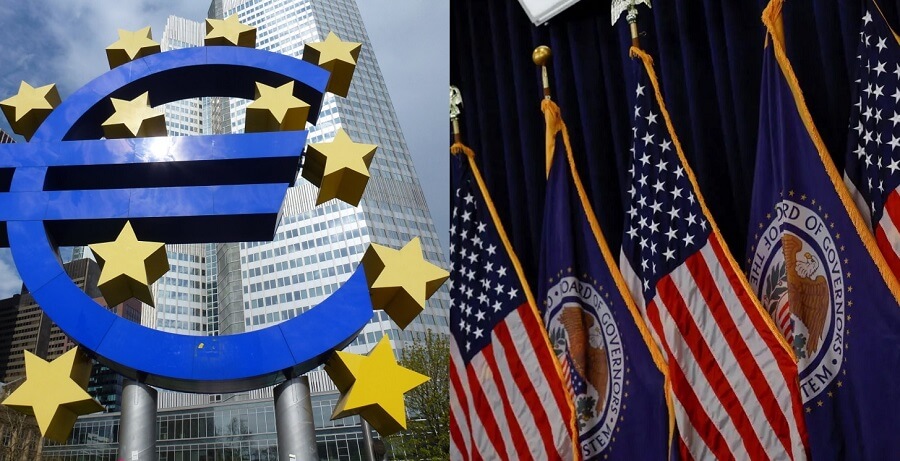The risks for the global market in 2025 will center on inflationary pressure, commercial protectionism and debt problems.

The US economy is influenced by immigration and tariffs policies, while growth in the Eurozone is weak and the European Central Bank policy is becoming more relaxed. The US dollar remained strong, putting pressure on non-US currencies, and commodity prices increased due to low supply.
Recent business surveys show that once the situation calms down after the recent US elections, companies’ investment and hiring activities, delayed due to political and regulatory uncertainty, will gradually resume, favoring the recovery of economic activities. In addition, the continuation of a low-tax environment has helped to sustain economic growth. However, the policies proposed by President-elect Trump also carry risks.
The strict immigration controls envisaged in Trump’s policies could lead to labor shortages in some sectors, stifling growth and pushing up wages. At the same time, uncertainty in trade tariff policies could impact companies whose supply chains rely on international markets and expose exporters to potential retaliatory measures. This will inevitably lead to increased costs for consumers, reduced purchasing power and higher inflation levels.
The worsening fiscal deficit induced by public policies will raise concerns in the markets about debt sustainability. Analysts believe that in a context of high inflation, the yield on ten-year US Treasury bonds could exceed 5%, increasing the borrowing costs for consumers and businesses and becoming a limiting factor for medium and long-term growth.
Currently, a SOFR (Secured Overnight Financing Rate) of 4% corresponds to a 10-year Treasury yield of 4.5%. Looking back to the early 2000s, when inflation averaged 2.5% and the federal funds rate was at 3%, long-term yields were close to the current situation. While market expectations of high inflation are consolidating, analysts believe that the upward trend in long-term Treasury yields will continue until 2025.
Economic indicators in the euro zone are still weak. The December composite PMI was still below the expansion-contraction line. The PMI is the Purchasing Managers Index, which is a composite index of managers’ purchasing behavior, and reflects the capacity for purchasing goods and services, taking into account new orders, production, employment, deliveries and inventories.
Although the service sector grew, the growth of loans to the private sector slowed in November, increasing by only 1% year-on-year. The new German government may introduce fiscal stimulus measures, but the effects are not expected to be visible before the second half of 2025. Moreover, many countries have excessively high fiscal deficits, which forces them to maintain restrictive fiscal policies.
The eurozone’s GDP growth rate is expected to be only 0.7% in 2025. Despite the weakening of the disinflationary effect of energy prices, HICP (Harmonized Index of Consumer Prices) inflation rose to 2.4% in December, core inflation remained at 2.7%, and service sector price inflation reached 4%. The European Central Bank’s monetary policy remains restrictive, but given the weakness of the economy, a further lowering of interest rates is expected.
With the progressive easing of monetary policy by the European Central Bank, the ten-year Euribor swap rate will gradually return to its long-term average level.
A few words of clarification: the swap rate is the contract through which two parties exchange, on established dates and for a predetermined period, flows of opposite sign determined by applying two different interest rates to the same notional capital; while Euribor is the interbank reference rate communicated daily by the European Money Markets Institute (EMMI, previously known as the European Banking Federation, EBF) as the average of the interest rates at which major banks operating in the euro money market, both in the eurozone and elsewhere, provide other major banks with interbank term deposits in euros.
Based on nominal growth forecasts, the yield on ten-year German government bonds is expected to rise to 2.7% by the end of 2025. As the yield gap between the United States of America and the eurozone is likely to widen further in 2025, the attractiveness of eurozone assets could continue to decline.
The Federal Reserve expects interest rate cuts in 2025 to slow compared to 2024, due to inflationary pressures caused by trade protectionism and labor shortages. Analysts expect the Federal Reserve to cut interest rates by 25 basis points in each of the first three quarters of 2025, for a total of 75 basis points, which is higher than the market expectation of two rate cuts. Although a cooling labor market and rising long-term Treasury yields could weigh on the economy, a strong dollar could still prompt the Federal Reserve to adopt a more accommodative policy to ease economic pressures.
The US dollar maintained its strength at the beginning of 2025, with the trade-weighted and inflation-adjusted dollar index approaching its all-time high of 1985. The strength of the US dollar is putting pressure on the Japanese currency, with the dollar/yen pair approaching the 158-160 range. Analysts believe that, against the backdrop of the continued strength of the US dollar, currencies other than the US dollar are expected to remain under pressure throughout the year.
The US dollar index is moving within a strong channel and is holding at a two-year high. Analysts have stated that the technical side of the dollar/yen pair has shown strong upward momentum, with the exchange rate approaching the aforementioned range, which is the key point for the previous intervention by the Japanese government; if it were to exceed this range, it could trigger a further technical upward movement.
The OPEC Plus (Cooperation Agreement that aims to stabilize crude oil prices thanks to precise production quotas shared among the various members) has extended its supply reduction agreement to December 2024, with Brent crude oil rising to over $76 a barrel at the beginning of 2025. [Brent is the name of an oil field (now depleted) in the North Sea, off the coast of Scotland. It gave its name to the European benchmark crude oil: Brent crude (also called Brent blend, London Brent or Brent petroleum), now extracted from various fields in the North Sea.]
It should also be said that Asian buyers were looking for the quality of Middle Eastern oil, further helping to stimulate the crude oil market in that geopolitical area.
The European gas market also saw a reduction in supply due to the expiry of a transit agreement with the Ukraine, which caused the TTF index prices to briefly exceed 50 € per megawatt hour. The TTF (Title Transfer Facility) is the natural gas exchange index in the Netherlands market, which allows gas to be traded within the Dutch network and throughout Europe. Forecasts of colder temperatures could have further accelerated the depletion of natural gas stocks, which are currently below the five-year average in Europe.
In conclusion, in 2025 the global market will have to face multiple risks and uncertainties, including inflationary pressures, commercial protectionism and debt sustainability issues. The strength of the US dollar and US Treasury yields continue to be the dominant force in the market, while the volatility of commodity prices such as crude oil and natural gas has injected further uncertainty into the energy market.
Author: Giancarlo Elia Valori – Honorable de l’Académie des Sciences de l’Institut de France, Honorary Professor at the Peking University.
(The views expressed in this article belong only to the author and do not necessarily reflect the views of World Geostrategic Insights).







